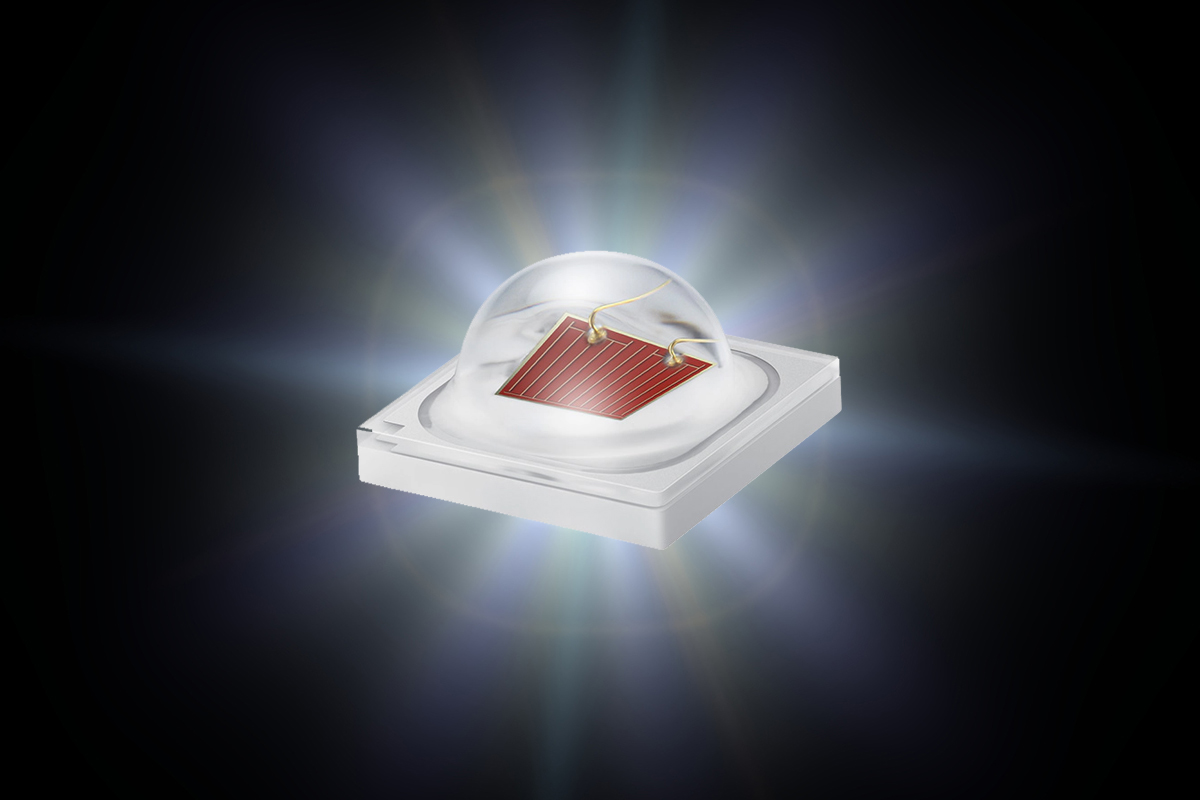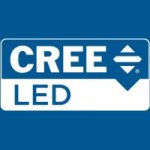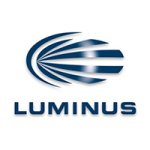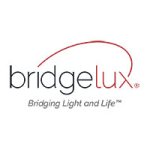Table of Contents Hide

What Is a Horticulture LED
Horticulture LEDs are solid state light sources that produce photosynthetically active radiation (PAR) over the spectral range of 400 to 700 nanometers (nm) to drive photosynthesis in plants. Additionally, horticulture LEDs can be used to produce electromagnetic radiation that targets the active spectrum of photomorphogenesis, photoperiodism and phototropism in plants. Horticulture lighting systems have been developed to provide supplemental photoperiodic light in greenhouse environments or to provide a sole-source of photosynthetic light in an indoor controlled environment. The use of energy- and spectrally-efficient LED technology in plant grow lights kick-started a revolution in horticultural lighting.Light and Plant Growth
Light is essential for plant growth. All plants, including those flowering, fruiting, and vegetable plants, are autotrophs that have evolved to use light to drive photosynthesis. Photosynthesis is the process used by plants to convert water and carbon dioxide into complex carbohydrates (sugars) and oxygen. These carbohydrates (e.g. cellulose or glucose) provide the metabolic building blocks for the various biosynthetic pathways. The excess of carbohydrates is used for biomass formation which includes stem elongation, increase of leaf area, flowering, fruit formation, etc. The photoreceptor responsible for photosynthesis is chlorophyll, although other types of antenna photoreceptors (primarily carotenoids) also promote photosynthesis. Apart from driving photosynthesis, electromagnetic radiation at specific wavelengths is used as a source of information to drive photomorphogenesis (plant morphology changes induced by light), photoperiodism (the response to the light-dark cycle) and phototropism (direction of growth). Each type of photoreceptors is sensitive to specific wavelengths and drives a different subset of photomorphogenic changes.Chlorophylls, the key photoreceptor in green plants, come in two major forms, A and B. Chlorophyll A is the primary phytopigment that accounts for around 75% of photosynthetic activity and has a peak absorption response at 430 nm and 680 nm. Chlorophyll B, which has absorption peaks at 460 nm and 640 nm, is an accessory pigment that collects energy and passes it on to chlorophyll A. Therefore chlorophyll B does not independently contributes to biosynthesis. Furthermore, the 3:1 ratio of chlorophyll A to B in plants indicates the dominant dependence of plants on chlorophyll A in photosynthesis. While chlorophyll levels are increased under electromagnetic radiation with a spectral composition rich in red (long wavelength) and blue (short wavelength), chlorophylls reflect a majority of the wavelengths in the green region (550 nm to 650 nm) and that's why the leaves appear green.
The carotenoid family includes beta-carotene and the principal xanthophylls (zeaxanthin, violaxanthin and lutein). These secondary metabolites absorb light most strongly in the range of 450 nm to 550 nm. Carotenoids are yellow to orange in color because they reflect or transmit light having a wavelength spectrum between about 550 and 650 nm. Carotenoids not only contribute to photosynthesis, but also protect the chlorophylls from photooxidation by dissipating excess light as heat when the photosynthetic region is overloaded with incoming energy.
There are also non-photoreceptor and non-photomorphogenic antenna pigments in plants such as anthocyanins and flavonoids. They function as sunblock and impede superoxide production in response to high intensity blue (400-500nm) or ultraviolet (300-400nm) radiation. In plants, anthocyanins, flavonoids and carotenoids are important bioactive antioxidants which quench free radicals and eliminate compounds that may cause photobleaching and growth inhibition.
Photomorphogenesis is mediated by the phytochrome, cryptochrome and phototropin photoreceptors. The phytochrome photopigment has two isoforms called Pr and Pfr which respond to 660 nm red and 735 nm infrared radiation respectively. Different photomorphogenetic responses mediated by phytochromes are sent to metabolic pathways within the plant that regulate seed germination, root development, tuber and bulb formation, leaf expansion, stem elongation, dormancy, flowering and fruit production. Cryptochromes which absorb light in the range from 340 nm to 520 nm prevent elongation of hypocotyls and mediate the entrainment of the circadian rhythms in flowering plants. The phototropins are plasma membrane-localized protein kinases that regulate phototropism, chloroplast accumulation, stomatal aperture, leaf flattening, and inhibition of leaf expansion.
What Is an LED
An LED (light-emitting diode) is a semiconductor device that converts electric energy into electromagnetic radiation in the visible range of the spectrum (light). Professionally speaking, an LED is a packaged device composed of a light source with mechanical supports, electrical and thermal interfaces, and an encapsulation which prevents mechanical and thermal stress shock and humidity-induced corrosion and is oftentimes phosphor-mixed to spectrally alter the light composition. Core to an LED package is a semiconductor chip (the light source, also known as a die) which is generally formed by growing epitaxial layers on a substrate. The epitaxial layers are doped with impurities to create a P-N junction. When a forward bias is applied to the diode, electrons from the positively charged (P-type) layer and holes from the negatively charged (N-type) layer flow into the P-N junction and recombine with each other. Each electron-hole recombination releases a quantum of energy in the form of a photon. A photon is a packet of electromagnetic radiation that is perceived as light.The LED Advantages in Horticulture Lighting
High energy efficiency and long lifespan are the iconic benefits of LED technology. In horticultural lighting, efficiency has another version of interpretation. Traditionally, horticulture lighting systems had made use of high pressure sodium (HPS), metal halide (MH) lamps, or in some cases fluorescent lamps. However, these light sources has a very low energy conversion efficiency (typically less than 20%). In contrast, LED chips have a wall plug efficiency of up to 66% and the phosphor-converted LEDs have a radiant efficiency well over 40%.In this industry, the source or system efficiency is converted to photon efficacy which quantifies how efficient the LED is at creating photosynthetic photon flux (PPF) per joule of electrical energy used, instead of luminous efficacy which describes the ability to produce a visual sensation in the human eye. PPF refers to the total amount of photosynthetically active photons generated by a light source and measured in micromoles per second (µmol/s). The photon efficacy of horticulture LEDs is referenced in PPF/W and measured in µmol/J. In practices, LED grow lights can hit a photon efficacy of 3.2 PPF/Watt, whereas a typical HPS grow light can reach only up to 1.7 PPF/Watt.
Spectral engineering has been a central theme of horticultural lighting since its beginning. As previously noted, the bandwidth of light between 400 and 700 nm is the primary part of the electromagnetic spectrum that can stimulate phytopigments for photosynthesis in plants. Even within the PAR spectrum, not all wavelengths of light are equally efficient in driving plant photosynthesis. Red and blue wavelengths stimulate photosynthesis and control plant morphology most effectively, and the wavelengths that fall within the green portion of the PAR range have a very limited effect on plant growth.
Spectral efficiency describes how well the spectral power density (SPD) of light source overlaps with the desired action spectrum for the most effective photosynthetic response. HPS, MH and fluorescent lamps have a poor spectral efficiency since their SPDs contain a considerable portion of photosynthetically inactive light such as infrared radiation (IR) and ultraviolet radiation (UV). The fixed SPDs of these broad spectrum light source means photosynthetically active radiation can be oversaturated in some wavelengths and deficient in other wavelengths.
Greater spectral control is one of fundamental advantages that LEDs maintain over traditional horticulture lighting systems. LEDs by nature are monochromatic light sources that emit in narrow spectral bands, resulting in a color light, such as red, blue or green. The narrow bandwidth spectrum emitted from LEDs can be easily tailored to correspond to the photosynthetic peaks of the PAR curve. Narrow band LEDs can be converted to a polychromatic light through phosphor conversion for a broader spectrum to support full cycle plant growth. Multiple-channel LEDs in RGB, RGBA or RGBW combinations can additively mix out any colors within the constituent LEDs, enabling unprecedented spectral flexibility and efficiency.
Unlike metal halide and high pressure sodium lamps that dissipate a large amount of infrared energy (heat) in the radiant beam of light, LEDs do not radiate thermal IR energy in its light spectrum. Absence of radiant heat allows for maximum photon irradiance at close proximity to plant canopy, which ultimately leads to better photosynthetic productivity while saving space and energy. High radiant heat flux from the HPS grow lights demands a distance between the light source and the plant and thus these light fixtures can only be used in toplighting applications. LED technology enables novel strategies such as intracanopy lighting (interlighting) to be implemented for uniform photosynthetic illuminances throughout the canopy - without unwanted heat generation.
How Are Horticulture LEDs Made
The epitaxial layers of horticulture LEDs are made from direct bandgap semiconductors for their higher probability of radiative recombination over semiconductors with an indirect band gap. Two primary semiconductor families are the nitride diodes and the phosphide diodes. Indium gallium nitride (InGaN) of the nitride family produces electromagnetic radiation in the shorter-wavelength parts of the visible spectrum and is therefore used to build white, green, cyan, blue and royal blue diodes. Red, red-orange and amber light may be produced using LEDs formed from the phosphide semiconductors such as aluminum indium gallium phosphide (AlInGaP), the small energy band gap of which enables the diode to produce longer-wavelength radiation.InGaN epitaxial layers are grown on a sapphire, silicon carbide (SiC), or silicon substrate (wafer), whereas AlInGaP epitaxial layers are grown on a gallium arsenide (GaAs) or gallium phosphide (GaP) substrate. High quality epitaxial growth depends on the lattice match of the substrate material to the InGaN or AlInGaP layer. Any mismatch between the substrate and semiconductor layer results in a microcrack (threading dislocation). This type of atomic defect causes recombinations between electrons and holes to occur in a nonradiative manner and thus compromises the internal quantum efficiency (IQE) of the LED. Threading dislocations form in highest densities on silicon and sapphire based GaN LEDs. A SiC substrate creates much less dislocations and results in 5 to 10% efficacy advantage over chips with a silicon or sapphire substrate.
Horticulture LEDs are available in two primary groups: full spectrum LEDs and narrow band LEDs. Full (or broad) spectrum LEDs deliver the spectral composition of sunlight yet without thermal radiation and wavelength waste. These LEDs are formulated with emphasis on the blue and red regions while providing additional wavelengths such as far red and green to support full cycle cultivation and complete plant development. Narrow band LEDs provide monochromatic output to maximize the most needed wavelengths of light. These LEDs are available in deep blue (450 nm), hyper red (660 nm), far red (730 nm), and green (530 nm) colors. Purple LEDs, which is neither a full spectrum LED nor a narrow band LED but combines key wavelengths of red and blue into a single package, are also a standard offering in the market. Purple LEDs can also be mixed with the broad spectrum lime LEDs to increase yield (fresh weight) and antioxidant levels while producing high quality white light to aid in visual inspection and plant harvesting.
Full spectrum LEDs and purple LEDs utilize wavelength conversion and color mixing to achieve the desired mixture of wavelengths. LED chips are coated or dispensed with a phosphor mixture which function to down-convert a portion of the short wavelengths into longer wavelengths. Hence these LEDs are called phosphor converted LED (PC-LEDs). In the PC-LED architecture, the Stokes loss due to phosphor down-conversion constitutes a considerable portion of total energy waste of the LED. Narrow band LEDs are direct emitters that do not go through phosphor down-conversion, and thus do not suffer from the Stokes loss.
Both phosphor converted LEDs and narrow band LEDs are typically encapsulated with silicone. The difference is that in PC-LEDs phosphors are mixed with silicone polymer to act as the down-converter and protective encapsulant, while in narrow band LEDs transparent silicone polymer is used to prevent ingress of contaminants and protect the chips from mechanical impacts. Silicon encapsulations boast of high thermal stability, photo stability and chemical resistance. However, extra ingress protection for the LEDs is necessary in real world applications because the high moisture and gas permeability of silicone can be a diode degradation factor in cultivation environments with high humidity.
Types of Horticulture LEDs
PLCC type mid-power LEDs (surface-mount devices that consume less than 1 watt of power) are the most popular light source for both general illumination and horticulture lighting simply because they have a relatively higher efficacy and lower cost than other types of packages. Nevertheless, this type of LEDs is highly prone to accelerated performance degradation and premature failure. As such, a very competitive initial cost often does not translate to a good return on investment (ROI), a long payback period, and peace of mind. PLCC is short for plastic leaded chip carrier. A mid-power LED using this architecture has its chip mounted on a silver (Ag)-coated metal lead frame molded in a plastic housing wherein a reflective cavity is formed to improve light extraction. The cavity is filled with a clear or phosphor mixed silicone polymer to encapsulate the chip. Electrical connection and thermal path between the LED chip and lead frame is made through wire bonding. The cavity or plastic housing of cheap products is made of polyphthalamide (PPA) or polycyclohexylenedimethylene terephthalate (PCT) which has poor resistance to photo-oxidation and thermal degradation. The silver lead frame plating is susceptible to corrosion due to interaction with sulfur-containing contaminants, which can penetrate into LEDs through the silicone encapsulation. Wire bonding used in PLCC packages can break. The inefficient thermal conduction path may cause heat flux concentrations which introduce a high thermal stress to the LED.High power LEDs fabricated on ceramic substrates have a robust thermal conduction path that enables a high photosynthetic photon flux density (PPFD) to be delivered to plant canopies. High power LEDs may be driven at current from hundreds of mA to more than an ampere and produce over 10 µmol/s of photosynthetic photon flux from a single package. A large chip or a multi-die array is mounted onto a ceramic substrate which is metalized and comes with thermal vias to provide efficient heat dissipation. Excellent PPF maintenance and wavelength stability justify the higher cost of these ceramic based horticulture LEDs.
Chip-on-board (COB) LEDs provide a large light emitting surface (LES) that enables delivery of high and uniform PPFD values across an entire canopy. A COB LED package consists of a dense array of LED chips which are die-bonded onto a metal-core printed circuit board (MCPCB) or a ceramic substrate. This large, low thermal resistance substrate enables better thermal contact with a flat, clean heat sink. The removal of the intermediate substrate reduces the thermal resistance of the package. Efficient thermal design allows the COB package to operate at high current density and deliver a PPF of up to hundreds of micromoles per second.
Chip scale package (CSP) LEDs eliminate wire bonding and submount through a flip-chip architecture. The technology significantly reduces thermal resistance within the package, scales down the package size, and drives down the cost. CSP LEDs fundamentally address the performance degradation factors in PLCC type mid-power LEDs, making them a very attractive solution for the horticulture lighting industry.















